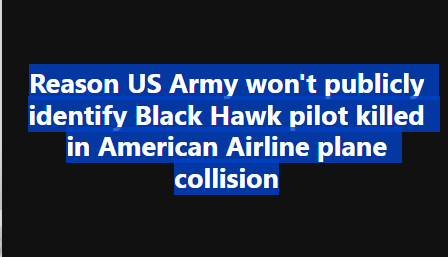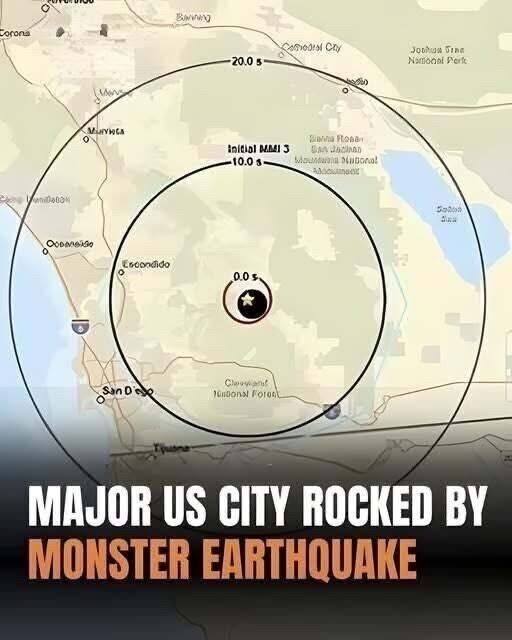Reason US Army won’t publicly identify Black Hawk pilot killed in American Airline plane collision
On January 29, 2025, a devastating mid-air collision occurred between an American Airlines regional flight and a US Army Blackhawk helicopter near Washington, D.C., resulting in the tragic loss of life. The crash, which took place close to Ronald Reagan National Airport, claimed the lives of all 64 passengers aboard the American Airlines flight and three personnel onboard the Blackhawk helicopter. The incident has sent shockwaves through the aviation community and left the families of the victims grappling with an unimaginable loss.
The crash occurred late in the evening, as the American Airlines regional flight was nearing its final approach to the airport. The Blackhawk helicopter, which was part of a routine military operation, was flying in restricted airspace near the Potomac River when the two aircraft collided. Eyewitnesses reported seeing both aircraft break apart midair before plummeting into the river. Emergency responders quickly arrived at the scene, but unfortunately, no survivors have been reported from either aircraft.
The US Army has confirmed the identities of two of the three soldiers aboard the Blackhawk helicopter. They were Staff Sgt. Ryan Austin O’Hara, 28, from Georgia, and Chief Warrant Officer 2 Andrew Loyd Eaves, 39, from Maryland. Eaves’ remains have not yet been recovered, and his status has been listed as “duty status-whereabouts unknown.” The identity of the third soldier on the helicopter has not been released, as per the family’s request.
The National Transportation Safety Board (NTSB), along with the Federal Aviation Administration (FAA) and the US Army, has launched a joint investigation into the causes of the crash. Authorities are working around the clock to determine the sequence of events that led to the tragic collision, including whether there were lapses in air traffic control coordination, miscommunication between the pilots, or errors in airspace management. As investigators comb through radar data, black box recordings, and flight logs, the primary focus is to understand how two aircraft could have found themselves on a deadly collision course.
One of the central questions investigators are grappling with is how the two aircraft came to be in such close proximity. Washington, D.C., is home to both military and civilian air traffic, and the airspace around the city is typically highly regulated to prevent such incidents. With multiple military installations nearby, including the Pentagon, coordination between military and civilian air traffic control systems is essential. In this case, it remains unclear whether there was a breakdown in communication or coordination between the air traffic control centers overseeing the flight paths of both the civilian airliner and the military helicopter.
The FAA and the US Army are working closely together to provide all necessary data to assist in the investigation. In the aftermath of the crash, both organizations have expressed their deepest condolences to the families of the victims. The US Army has pledged full cooperation with investigators and has committed to ensuring that lessons are learned to prevent similar tragedies from occurring in the future.
As the investigation continues, there is growing concern about the potential risks posed by the coexistence of military and civilian aviation in highly congested airspaces. The proximity of military installations to major airports, such as Washington’s Reagan National, has raised important questions about airspace management and whether existing safety protocols are adequate to safeguard against such accidents. Experts have called for a thorough review of air traffic control procedures and airspace regulations to determine whether changes are needed to prevent future collisions.
The loss of life in this tragic accident is immeasurable, and the families of the victims are now left to mourn their loved ones. As rescue and recovery operations continue, the search for Eaves’ remains remains a top priority for the military and emergency responders. The American Airlines flight was a regional commuter flight, and the victims on board included passengers from various backgrounds, making this tragedy all the more poignant for a broad community of people.
In the wake of the crash, the aviation community is focused on ensuring that the causes of this tragedy are fully understood and addressed. Investigators are working to reconstruct the events leading up to the collision, and officials are determined to make any necessary changes to prevent such a disaster from occurring again. While the investigation is ongoing, one thing is certain: the lessons learned from this incident will be crucial in shaping future aviation safety measures.
The collision between the American Airlines flight and the US Army Blackhawk helicopter near Washington, D.C., has left a lasting impact on the aviation community, raising critical questions about the coordination and safety of air traffic in areas where military and civilian operations intersect. The NTSB, FAA, and US Army are committed to uncovering the truth behind this tragic event and ensuring that steps are taken to prevent similar incidents in the future.
As the investigation unfolds and the search for the missing soldier continues, the nation mourns the loss of 67 lives in this unprecedented collision. The families of the victims, along with the broader aviation community, are left with the daunting task of finding closure in the wake of this heartbreaking tragedy.





